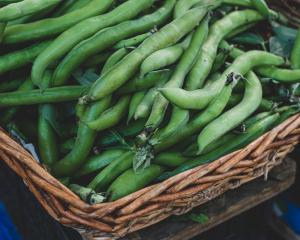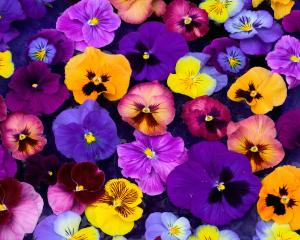Dunedin has many secret gardens, tucked away down driveways or private roads. Charmian Smith visits one created by a couple in their 70s.
Down one of the private roads off Mornington Rd is a hidden valley, blooming with the work of 75-year old Kieran Hurring.
Only two years ago it was a wilderness where the Hurrings kept a few sheep.
Before that it had provided an untamed playground for their eight children.
Kieran and his wife Dorothy built a house on a neighbouring section in 1958, and bit by bit bought up adjoining empty sections.
Some had been sold in the United Kingdom when the land was subdivided but was abandoned when the owners saw the steepness, he said.
A solicitor who was tidying up an estate offered them the first adjoining quarter-acre for 40, and a mortgage if they needed it, he said.
Eventually they ended up with 1 acres additional to their original acre, and two of their children built houses on it.
Two years ago the Hurrings built their own new house, which is more suitable for Dorothy, who is developing Parkinsons.
They sold their original house and Kieran, a former salesman, began to establish a garden on the steep section in the sheltered valley.
He dug out the large stones and used them to build small retaining walls for the beds and paths, and to line an open stormwater drain running through the property, which turns into a creek when it rains.
Grass clippings, wood shavings and sand helped condition the clay soil, and all the plants were either given to them or propagated by them in a shed built out of old windows, he said.
He proudly shows a bucket of rose cuttings, all of which have taken.
They are in his own mix of soil, grass clippings and horse manure, he says.
The Hurrings are members of several gardening groups.
When you are given plants you don't always know what they are, but you don't need to identify a plant to grow it, he says.
A beech tree turned out to be a black beech; one of the hydrangeas turned out to have unusual oak leaf-shaped leaves; various species of lilies and types of dahlias add colour to the beds at this time of year.
Trees are scattered around the lawns - among them a silver birch, a golden totara, an ash tree that drops its branches and is for the chainsaw soon, and fruit trees - a Peasgood Nonsuch apple for both eating and cooking, peach and plum trees, and a walnut tree that grew from a walnut.
Several beds of vegetables provide food for the whole family and for giving away to those who are sick, or to Ings rest-home.
Kieran's secret to growing plants is to feed them.
He puts horse manure in a 44-gallon drum with water and stirs it to make liquid manure.
He also recommends cow manure and seaweed.
Go to Aramoana in late autumn after a good wind to find acres of seaweed washed up on the beach and rocks, he says.
Kieran would like to encourage people to establish their own gardens.
You don't need expensive equipment - he mainly uses a spade, a fork, a rake and a push-pull hoe.
If he can do it at his age, anyone can, he says.
• Photos by Gerard O'Brien; prints available from otagoimages.co.nz.












